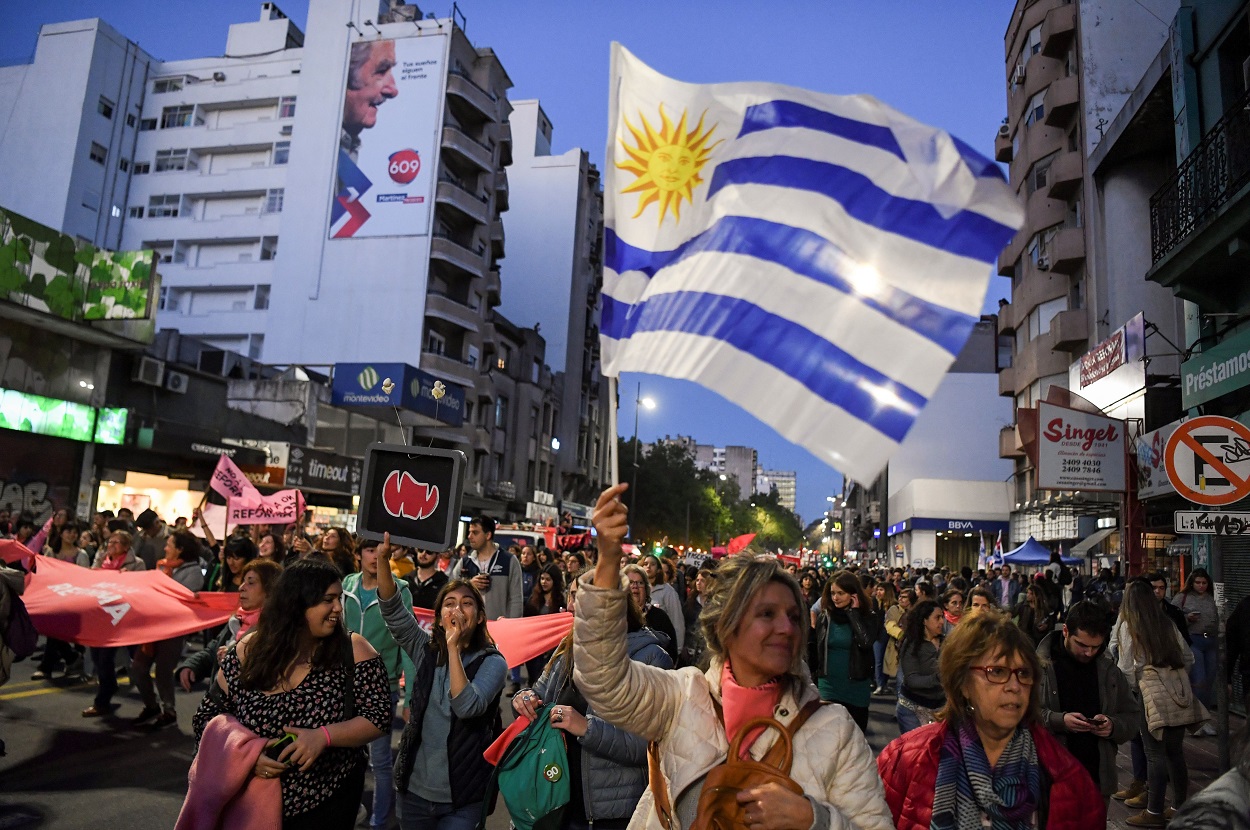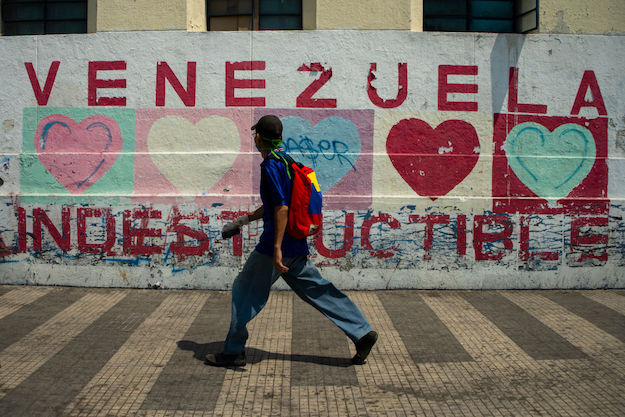Uruguay, too?
Scenes of an estimated 55,000 people marching through Montevideo on Oct. 22 caused some to ask if the country would become Latin America’s latest example of social unrest, following mass protests in Bolivia, Chile, Ecuador and Haiti.
The short answer is no, not really.
“This is a fairly normal expression from the left,” Uruguayan researcher Nicolás Saldías, of the Wilson Center, told AQ. “It shows that Uruguayan democracy is pretty mature.”
Whereas citizens elsewhere in the region protested their governments, Uruguay’s protests were against a proposed security reform. And as protests elsewhere have devolved into violence, Saldías noted that the gathering of mostly young people was peaceful and “hyper-organized.”
Daniel Martínez, the presidential candidate for the governing center-left Broad Front coalition that helped organize the march, told reporters that the event was a “display of the civic commitment of young people.”
Marchers had taken to the streets in opposition to a constitutional reform that will be on the ballot when Uruguay votes for a new president on Oct. 27. The reform would overhaul the country’s security policies after years of rising crime. The most controversial proposed change is the creation of a national guard composed of soldiers that would assist the police with public security. The reform would also make some prison sentences more severe and would legalize night raids, which are currently illegal.
The debate over security comes as a spike in crime has frustrated the country known for its security. Homicides hit a record number in 2018, increasing 35% over 2017 to 11.2 per 100,000 people – worse than the rate of regional neighbors Argentina, Paraguay, Bolivia, Chile, Peru and Ecuador.
Opposition politicians have jumped on public concern over security ahead of this year’s general election. In May 2018, Jorge Larrañaga, a senator from the center-right National Party, launched a campaign called Live Without Fear (Vivir Sin Miedo) to promote the reform now under consideration. Uruguay’s electoral court approved a vote on the proposed changes after Larrañaga’s campaign collected over 376,000 signatures in support.
This isn’t the first time that security measures have come up for public consideration in Uruguay, following a 2014 plebiscite on a proposal to lower the age of criminal responsibility. The difference is that this year’s reform is expected to pass, said Saldías.
Even though by some metrics the security situation has improved this year – homicides and thefts were down 22.6% and 4.9% respectively in the first six months of 2019 – public frustration over crime remains high.
Ultimately, the large protest turnout in the capital may not reflect national sentiment. While a poll by Factum showed that only four out of 10 voters support the reform, other surveys suggest that the proposal will meet the 50% threshold required to pass. A poll from Opinión released this month showed that, despite decreasing support for the reform in recent months, 56% of Uruguayans still want it to become law.
Despite that support, none of the presidential candidates on Sunday’s ballot support the reform. That includes Luis Lacalle Pou, who handily defeated Larrañaga and a handful of other contenders for the National Party’s nomination back in June.
Uruguayan politics is not exempt from polarization or angry voters. But, at least for now, protests in the streets don’t appear to be a sign that the country’s reputation for political stability is at risk.
—
O’Boyle is a senior editor for AQ









